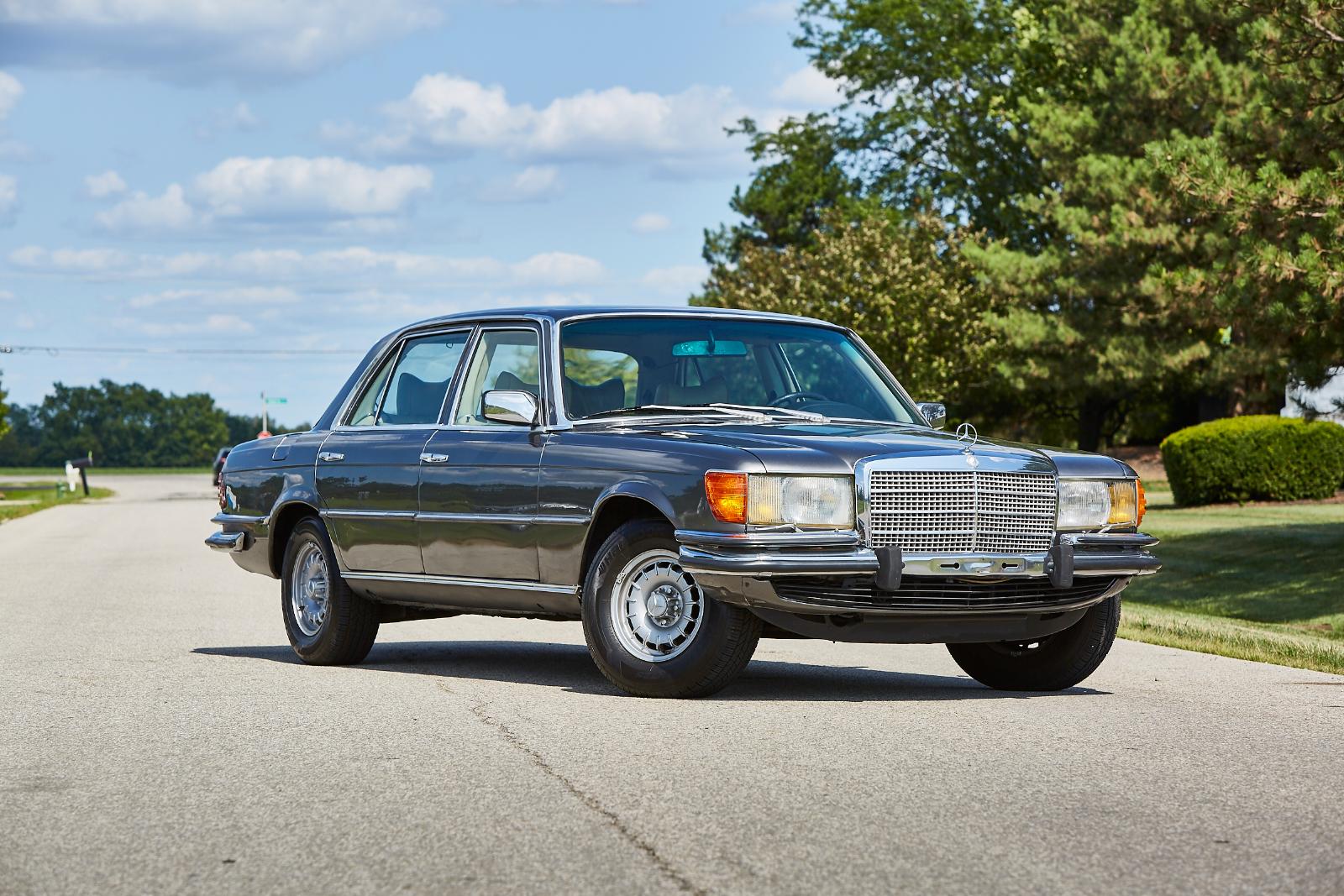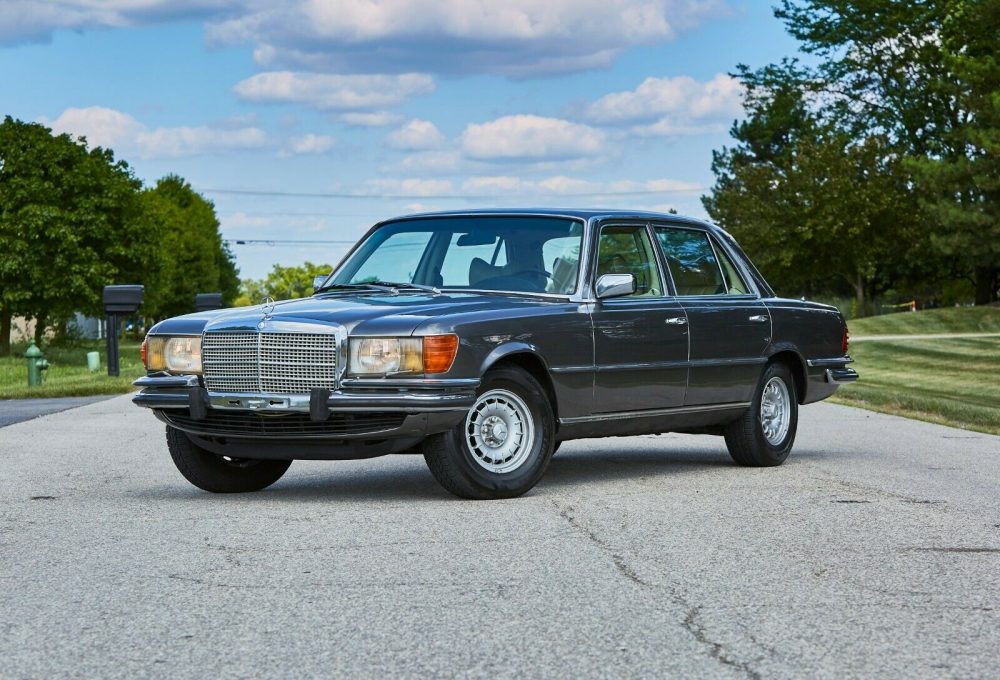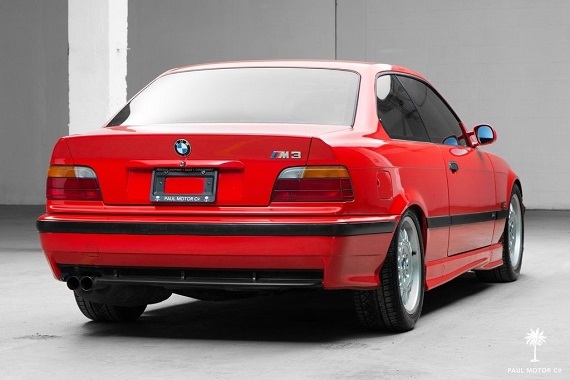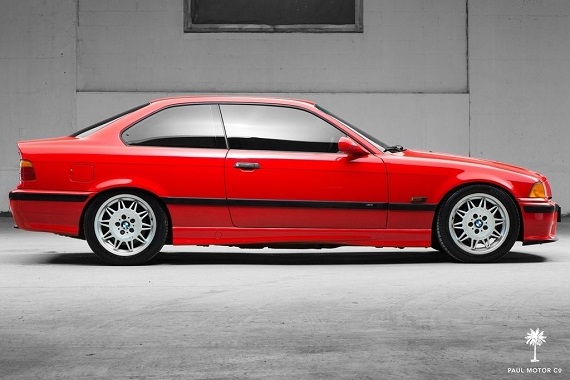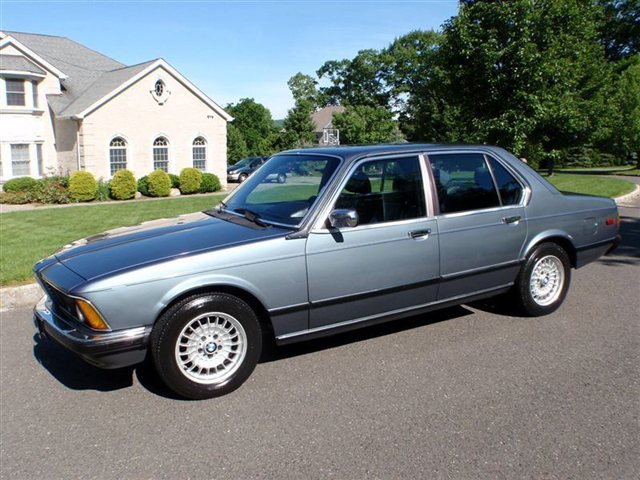While the M5 may have the notoriety of being the first serious super performance sedan, it’s easy to forget that Mercedes-Benz really started the trend. As early as the 1930s, Mercedes-Benz was building some of the fastest large cars in the marketplace. They were expensive, complicated, and beautiful works of engineering. It took a while post-war for both the marketplace and the company to come back to full strength, but two cars created in the midst of an international oil crisis I really think point towards the character of their respective companies. First was BMW’s hard-edged, barely disguised racer for the road, the 3.0CSL – which we sort of just looked at. It was expensive, relatively lightweight, stunning to look at and pretty quick to boot – a sporting nature that would carry through to the current generation of BMWs, still considered the benchmark in sporting sedans. On the other side of the fence was the 450SEL 6.9; who else but Mercedes-Benz would put the largest production V8 into a sedan when there was a gas crisis? If the 3.0 shouted about it’s racing prowess, the Mercedes was subtle and understated. Indeed, option number 261 even removed the displacement badge on the rear, and outside of that you’d only see hints of the car’s performance by the bulging tires and slightly more showy exhaust. But stomp on the loud pedal and the best part of 290 horsepower was on tap for you – and this was 1975. Remember 1975? It was when the base Corvette had 165 horsepower and if you wanted to just break 200, the L-82 was your only option at 205 horsepower. A full 40% more powerful, the Benz was the match for sports cars of the day in a straight line but offered extreme luxury at the same time:
Tag: European Spec
The holy trinity of M100-powered Mercedes-Benz cars, the 600, 300SEL 6.3, and 450SEL 6.9, are not for the causal or faint of heart owners. The buy-in is expensive, the parts are expensive, the labor is expensive, everything is expensive. These are not cars you can stick in the corner of the garage under a cover with a battery tender hooked up only to drive it once a month, if that. They all use extremely complicated suspension systems that will leave you weeping if you walk out in the garage and see the car suddenly resting on its rocker panels. Despite support from the Mercedes-Benz Classic Center, lots of parts have been no longer available for many years and aren’t coming back, so your only hope it to pray that it doesn’t break and if it does, hope it can be rebuilt. There is a very small, but passionate group of owners of these cars in the M100 club, but their membership is decreasing as the years going on as younger generations aren’t interested in spending sometimes five-figures for routine repairs on these cars.
If you are brave enough to dip your toe into the world of dry-sump engine lubrication and doors heavy enough to slice your fingers clean off if they get caught in them, then the 450SEL 6.9 is where you want to start. Full disclosure, I own a W116 chassis, in non-6.9 trim, so I am a bit biased on these, but also extremely realistic as I’ve worked on a 6.9 extensively and lived to tell about. The hydraulic suspension system is sturdy, but again, very pricey if something goes wrong, and the same can be said for the 6.9 engine itself. The non-6.9 bits are some of the best materials you could ever ask for in a car, sans the god-forsaken US-spec HVAC, so it is for sure a give and take situation. Buy a well-sorted example and stay diligent with the maintenance, it won’t be so bad. However, buy a project and have fun explaining to your wife and kids why Santa won’t be visiting your house this year. Thankfully the car I’m looking at today, a rare European-spec 1977, looks to have all the major things looked after and is it relatively good health. The thing is, I don’t think the owner wants to let go of it. At least for not what I think it is worth.
CLICK FOR DETAILS: 1977 Mercedes-Benz 450SEL 6.9 on eBay
3 CommentsIn a star-studded lineup from the 1980s, the BMW E23 certainly seems to be always the bridesmaid. I’d wager that even the E21 is more popular than the first 7-series, and that’s saying something. It doesn’t help that the 7, while bearing a resemblance to the other great Paul Bracq designs from the period, never quite seems to be in the right proportions – especially in U.S. form. But today’s example isn’t a U.S. spec model, it’s the more desirable and much more pleasant to look at European model. On top of that, it’s the turbocharged M102 under the hood, cranking out 252 ///Mvious horsepower and 280 lb.ft of torque to match. That was enough to propel the heavy, automatic 745i to 60 mph in the mid-7 second range and 137 mph flat out – numbers that made its competition envious. It’s got lower mileage, condition is great, and overall it appears to be a very nice example. The rarity and obscurity of the model in some part outweighs the less desirable nature of the large chassis among collectors. Yet this car has failed to sell for not one, not two, but now going on five years.
So what gives? Well, there’s only one reason that a car doesn’t sell, and it’s price. The seller of this car has had it for sale on and off again since 2013. We last looked at it almost exactly one year ago:
Perpetually, bidding runs out of steam between $5,000 and $6,000. That number seems far short of what the seller is hoping for, but we never learn much about what that amount is. A few weeks ago, the seller tried Bring A Trailer. The result? $5,000 in bids. So here we are again, a bit like Groundhog Day, with a new auction for this very nice example of an early 7:
CLICK FOR DETAILS: 1982 BMW 745i on eBay
2 CommentsAs I’ve said before, I usually try to stay away from regurgitation of material. However, there were a few reasons to look at this European specification M3 one more time.
I’ve recently featured a string of Canadian Edition E36 M3s with some sticker shock for fans of the traditionally affordable chassis. The first was a Hellrot model in August with a $35,000 asking price. That car, to my knowledge, failed to trade hands because though it was actively bid upon, the reserve was never lifted in the mid 20K range. The next stunner was the Individual Giallo car in September, which broke predictions at the $65,000 mark. I looked at another Dakar model in November hoping to capitalize on those high asks, with a reported sticker price close to $30,000. It, too, failed to break the reserve.
The traditional, and very valid, argument to paying high prices for these cars is that they’re essentially just a stock Euro model with a number attached to them. Why not just import a much cheaper and more plentiful example of those then? To that point I had twice looked at a non-Canadian Edition but European specification ’94.
This Mugello Red model originally came to our site in October, 2014. With about 83,000 miles and in generally good condition, it was certainly a unique and appealing alternative to the normal M3. It popped back up in June of 2016 with a few more miles, poor photography and a little more wear. It was also boldly offered with no reserve, though the auction ended with an “error in the listing”; eBay seller speak for the bidding not heading in the direction they were hoping.
Well, here it is again. This time, it is listed by the same seller as the Giallo car. It’s been cleaned up and has some great photography. Only a few thousand miles have been added since we originally listed the car. However, small items like the broken headlight haven’t been rectified. No additional maintenance is disclosed. It’s also interesting to me that the seller doesn’t note this as a rare “slicktop” no sunroof car – appealing to some. The photography and polish will cost you, as the asking price is nearly $23,000 this time around. That’s about what the similar mileage, similar specification Hellrot car bid to. Is it worth that much of a premium?
CLICK FOR DETAILS: 1994 BMW M3 Euro-spec on eBay
The below post originally appeared on our site October 12, 2014:
Comments closedIt’s been a good week for early 7 lovers here, but as Paul’s 1983 733i listing pointed out yesterday, some of them are neat to see but aren’t priced accurately. One such example of this is today’s 1982 745i. Now, off the bat it’s got several advantages over the 733i. It’s a much more attractive European specification model with slim bumpers, but those more interested in performance would rather see what the M102 produced sans catalyst – 252 horsepower, an otherworldly amount in 1983 in a sedan. Heck, that’s just shy of what the E28 M5 and M6 came to the U.S. with! So, what’s holding this one back?


